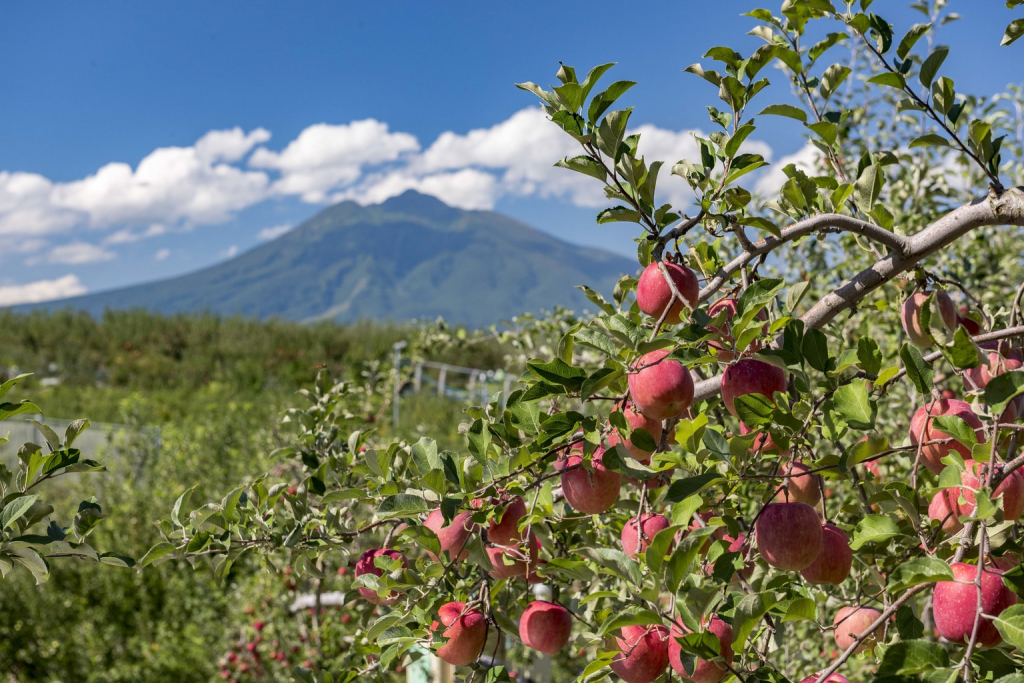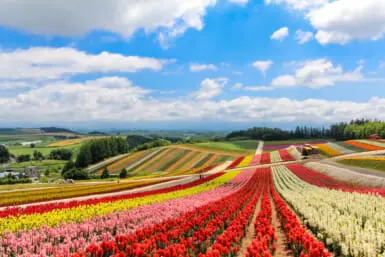The Aomori Prefecture Tourist Center – ASPAM – smells like apple pie. There are coolers filled with bottles of apple juice at the gift shop, as well as stacks of boxes of apple sweets.
At our accommodation for the evening in Hirosaki – the Japanese-style ryokan Yamano Hotel – they sell apple honey, apple-adorned forks and spoons, apple card holders, apple tea, dried apples and so on and so forth. After finishing our bath in the hot springs we pour ourselves a cup of apple vinegar. Mixed with hot water, it’s the perfect post-onsen refresher.
The Hirosaki Fruit and Vegetable Market has crates of Daikoei apples. The shiny red apples the size of small melons are grown only in Aomori, and the crates will be shipped to China where the apples sell for ¥2,500 a head.
At Kimura Orchard in Hirosaki, the branches of trees droop with the weight of red Fuji apples adorned with plum blossom stickers. The apples will be sent to Dazaifu Tenmangu Shrine in Fukuoka, home to 6,000 plum trees, where the apples will be gifted to the gods.
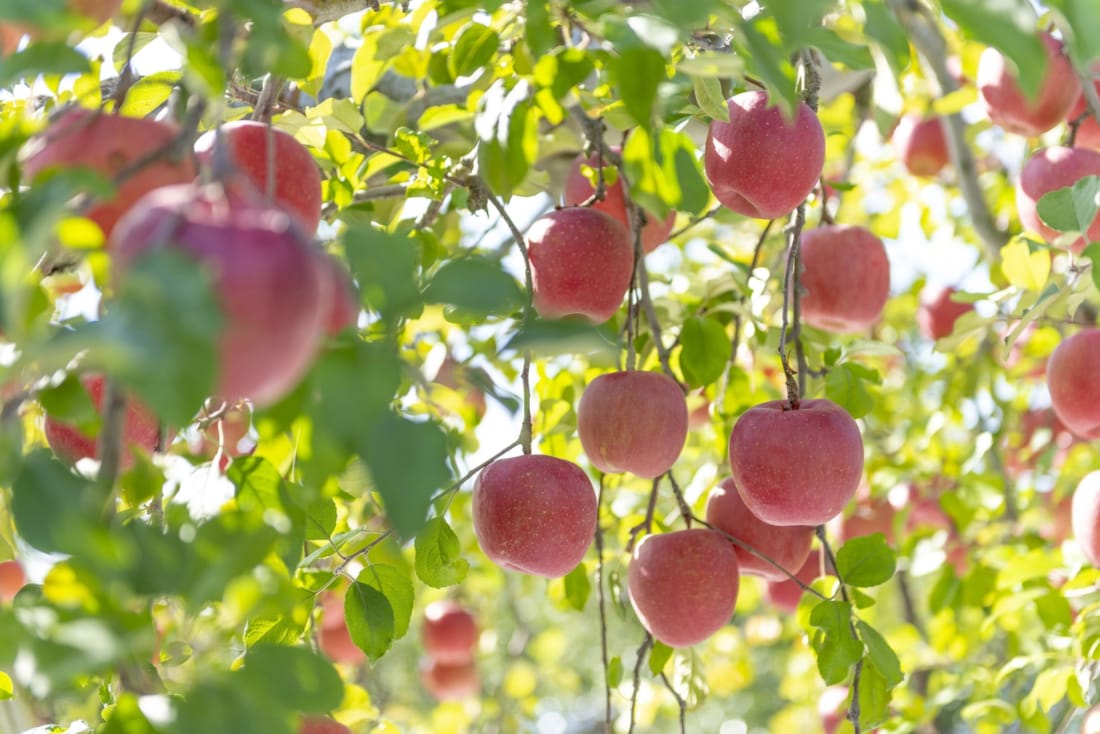
Photo by Koji Nishikawa
Apple of My Eye
Aomori, the northernmost prefecture on Japan’s main island of Honshu, produces more than half of Japan’s apple market. Aomori’s roots as Japan’s apple capital go back to the Meiji Restoration of 1868 when the emperor abolished the samurai class. The ex-samurai found themselves without title, land or money and many turned to agriculture.
Aomori’s cold weather prevented rice production, but the cooler summers were ideal for apple growing. Japan’s Department of Industry at the Interior Ministry was busy integrating and developing new farm products from the Western world, and they brought back apple seedlings from the US.
Eight years following the Meiji Restoration three apple seedlings were divided up among unemployed samurai of Aomori. The rest is history.
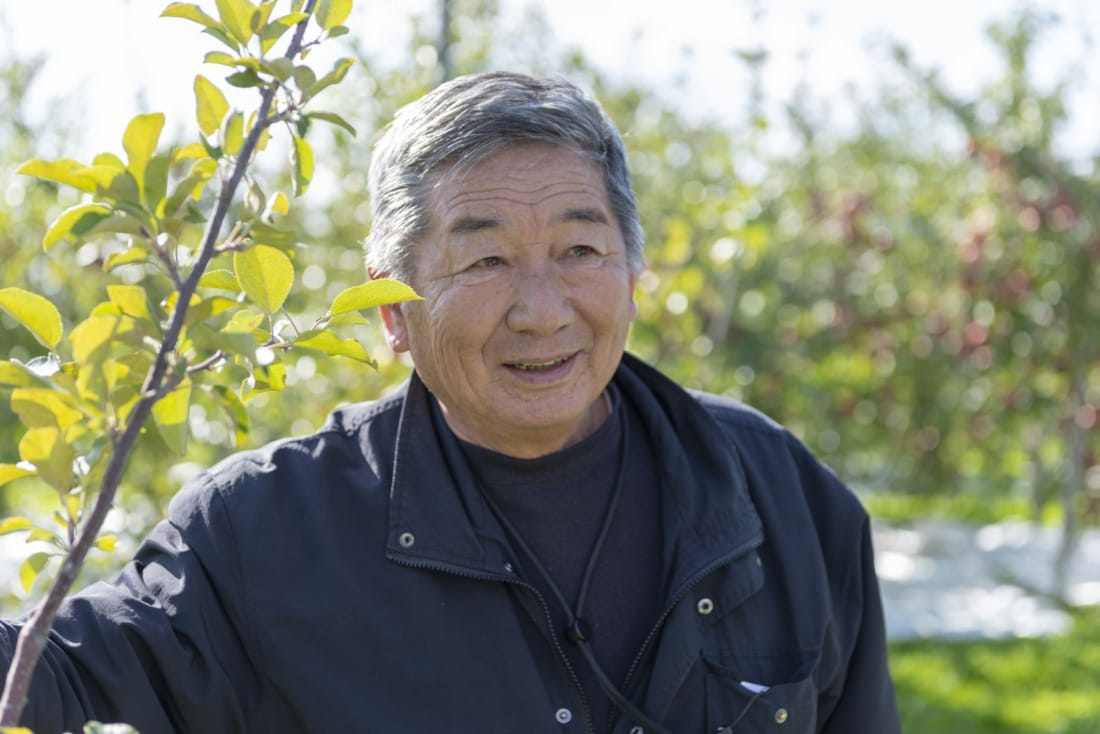
Photo by Koji Nishikawa
Easy as Apple Pie
“The best apple tree should have a trunk like a demon and branches like a princess,” says Toshio Kimura, a third-generation apple farmer. The Hirosaki farm was started roughly 100 years ago by three brothers, two of which were doctors, when they purchased the land to provide a living for the third brother.
Today Kimura Orchard is 100,000 square meters (about four city blocks in New York City), and they grow seven varieties of red and yellow apples. Kimura also planted a small peach orchard after a typhoon wiped out his apple crop in the early ‘90s. He harvests 50 tonnes of apples each season.
Kimura plants clover and other grasses in the orchard to gather nitrogen from the air, and implements other natural remedies to allow him to curtail his use of herbicides and fertilizers. He says the best trimming is no trimming. Wielding a wood-handled grafting knife, Kimura says trimming branches causes more branches to grow, and the tree has to provide more energy to growing branches – not apples.
“That’s my theory, anyway,” he says.

Photo by Koji Nishikawa
An Apple a Day
The apple harvest season in Aomori is from August until November. At Hirosaki Fruit and Vegetable Market, the highly sought after Daikoei apples will be sent to China in time for the lunar new year.
There are 90,000 crates of apples at the market the morning we arrive. Yesterday there were 130,000 crates, each weighing 20 kilograms, says Shizuo Kasai, the market’s senior managing director. There are rows and rows of green Orin apples, red Fuji apples and yellow Hoshi no Kinka apples. A total of 68 varieties will change hands here today.
During the morning auction local buyers, each wearing a windbreaker and a ball cap with a registration number attached to the front, mill about stacks of apple crates, flashing fingers in the air and shouting out bids as the auctioneer moves from one group of apples to the next. Apple farmers watch the proceedings so they know how their apples are being priced.
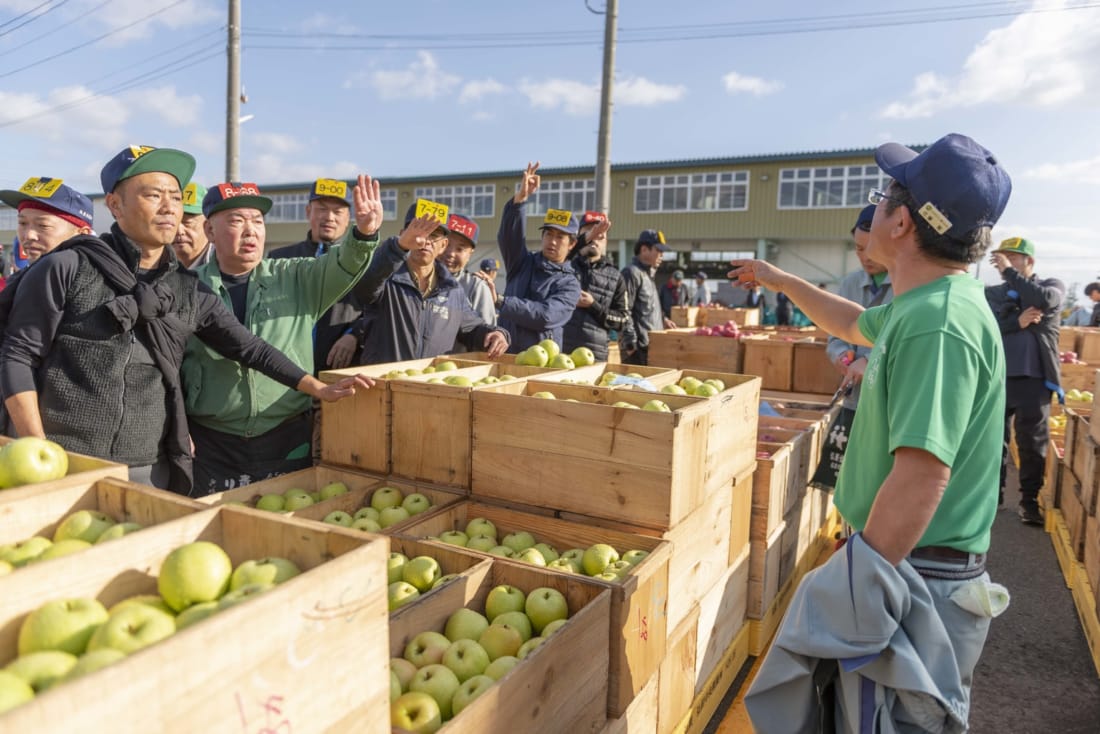
Photo by Koji Nishikawa
The Fuji apples are selling for ¥6,000 per crate; the Orin for ¥4,000. Seventy percent of the apples will be sold in Japan, with the remaining being sent to Taiwan, Hong Kong, Vietnam, Thailand, Russia and elsewhere where the Aomori brand is premium.
Many of the apple crates are plastic, but there are still plenty of apples stored in traditional handmade pine boxes, though the craft is dying as less and less Japanese craftsmen remain.
With more than 8 million apples leaving Hirosaki Fruits and Vegetables Market on this day, Aomori’s apple trade shows no signs of slowing.
As we drive away, we pass even more apple orchards of Aomori, and we munch on apple slices soaked in salt water prepared for us that morning by the chef at Yamano Hotel. My backpack is bursting with fist-sized apples donated by Kimura Orchard. A couple of them have plum stickers.
Back at ASPAM I buy Aomori apple cider and apple pie to take home.

Photo by Koji Nishikawa

